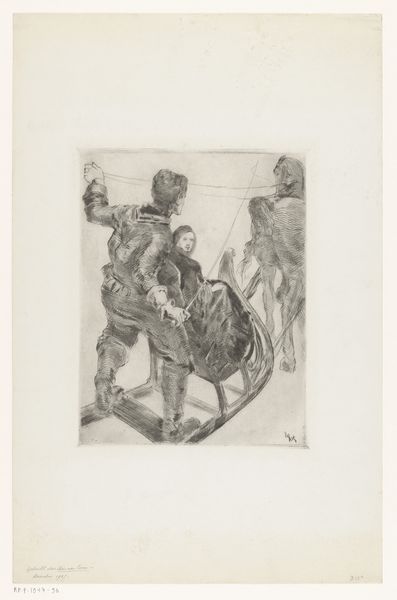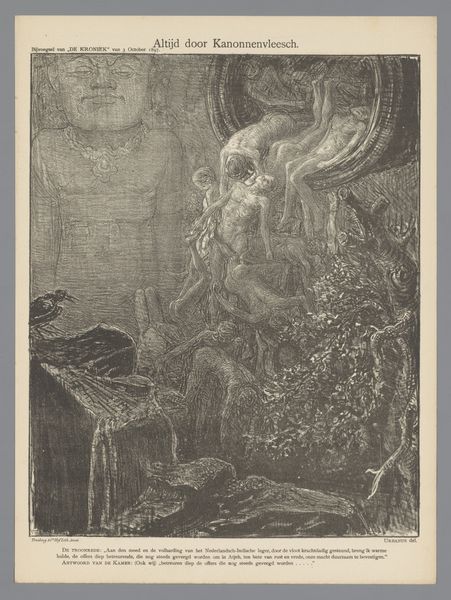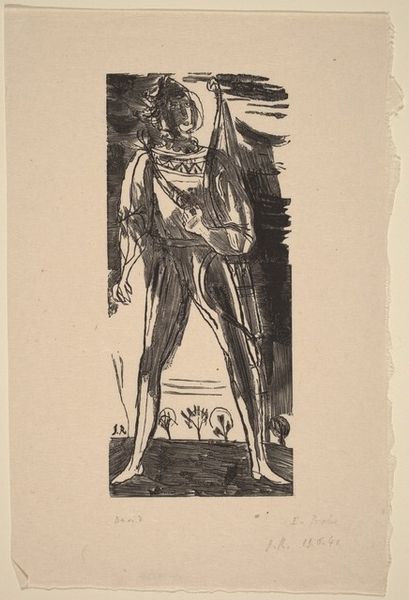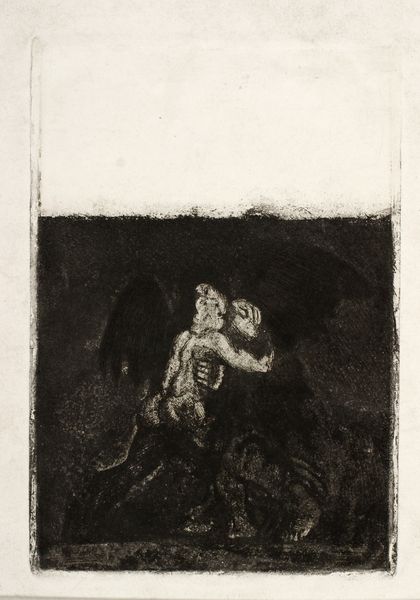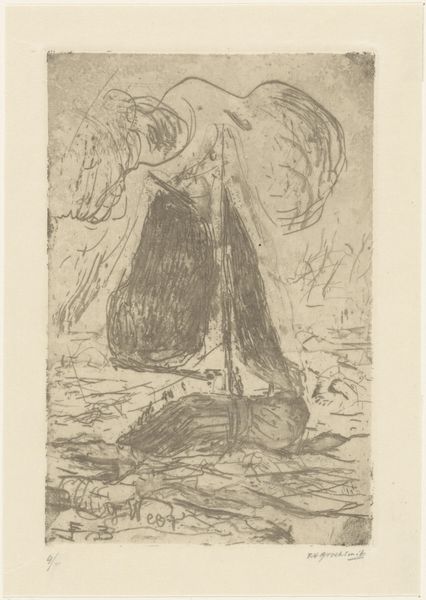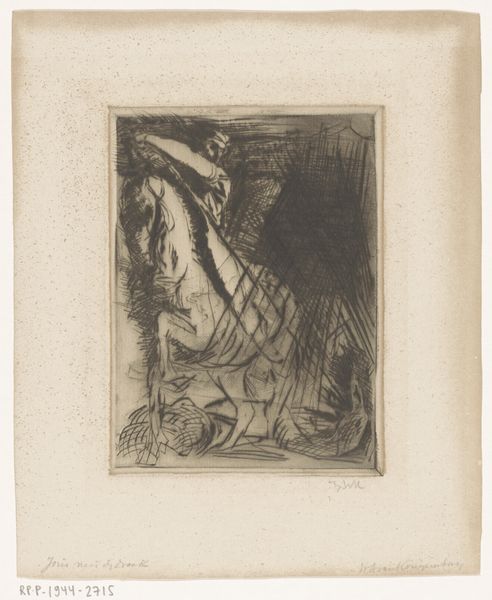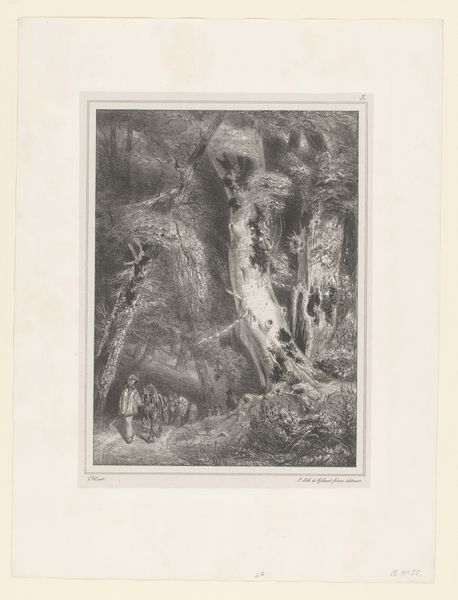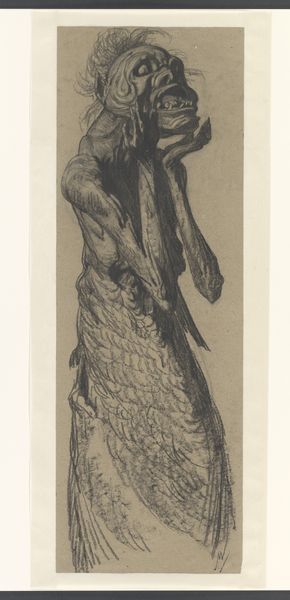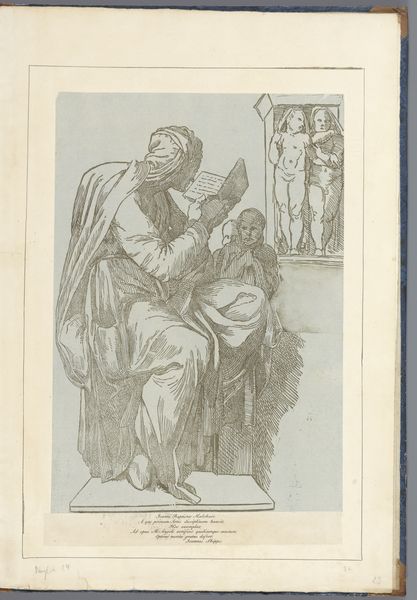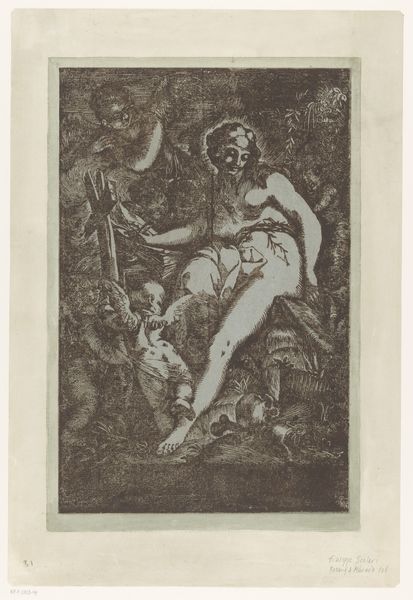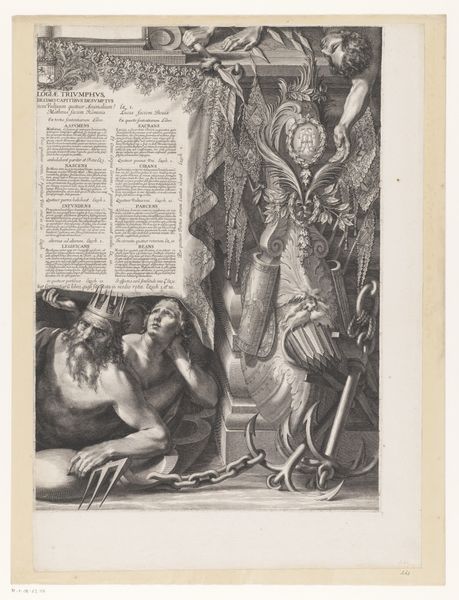
print, engraving
#
allegory
# print
#
figuration
#
momento-mori
#
symbolism
#
engraving
#
erotic-art
Dimensions: plate: 23.5 x 34.2 cm (9 1/4 x 13 7/16 in.) sheet: 15.8 x 26.9 cm (6 1/4 x 10 9/16 in.)
Copyright: National Gallery of Art: CC0 1.0
Curator: Flicien Rops' "Le Vice Supreme: Frontispiece," created in 1884, offers a visually arresting tableau of death and desire rendered through engraving. I am struck immediately by its rather morbid charm, that delicate rendering of decay coupled with implied luxury. What is your take? Editor: At first glance, it's that skeletal figure emerging from the coffin, draped in finery, that captivates. What social commentary might Rops be making by showcasing this macabre, yet sensual, depiction of mortality? The sharp detail and tonal range of the engraving seem crucial here, emphasizing the tactile quality of both the decaying flesh and the luxurious fabrics. Curator: Absolutely. And consider the frontispiece itself: this piece likely served as the introduction to a larger work, setting a tone and inviting commentary from the onset. The figure to the left, headless, carrying its own head, signals a complete dismissal of reason in the face of… what, exactly? Pleasure? Decadence? How might the context of late 19th century Europe impact how an audience receives it? Editor: I would wager the specter of institutional critique hangs heavily. This piece seems very pointed towards Parisian societal obsession with image and spectacle. Notice the predatory canines on the pedestal as a clear reference to Rome, that this very obsession with finery is an Empire’s failing, even a sign of a fall. Perhaps it is not luxury, but *access* to it for a select few at the cost of everything that Rops condemns. Curator: That reading resonates powerfully. The piece becomes a commentary on the artificiality and ultimately destructive nature of such superficial pursuits of glamour and vice. I’m also intrigued by the choice of engraving itself; its reproducibility made it an accessible medium, a perfect vehicle to disseminate Rops' pointed critique widely and make his feelings known. Editor: It’s as if Rops used the very tools and language of printmaking against the structures of the establishment, creating a very subversive tension. By mass-producing an image criticizing elitist practices and institutions, Rops democratizes critique. And so much of the allure and horror emanates from its very material. Curator: Well, I definitely find that my understanding of the engraving has evolved even further through this discussion. Considering its production alongside its imagery provides a fresh lens to observe how Rops was both of and against the currents of his time. Editor: I agree completely. It highlights the significance of recognizing historical framework while appreciating materiality. This allows for the work to continuously challenge perceptions around luxury and social value in its continuing dissemination.
Comments
No comments
Be the first to comment and join the conversation on the ultimate creative platform.
